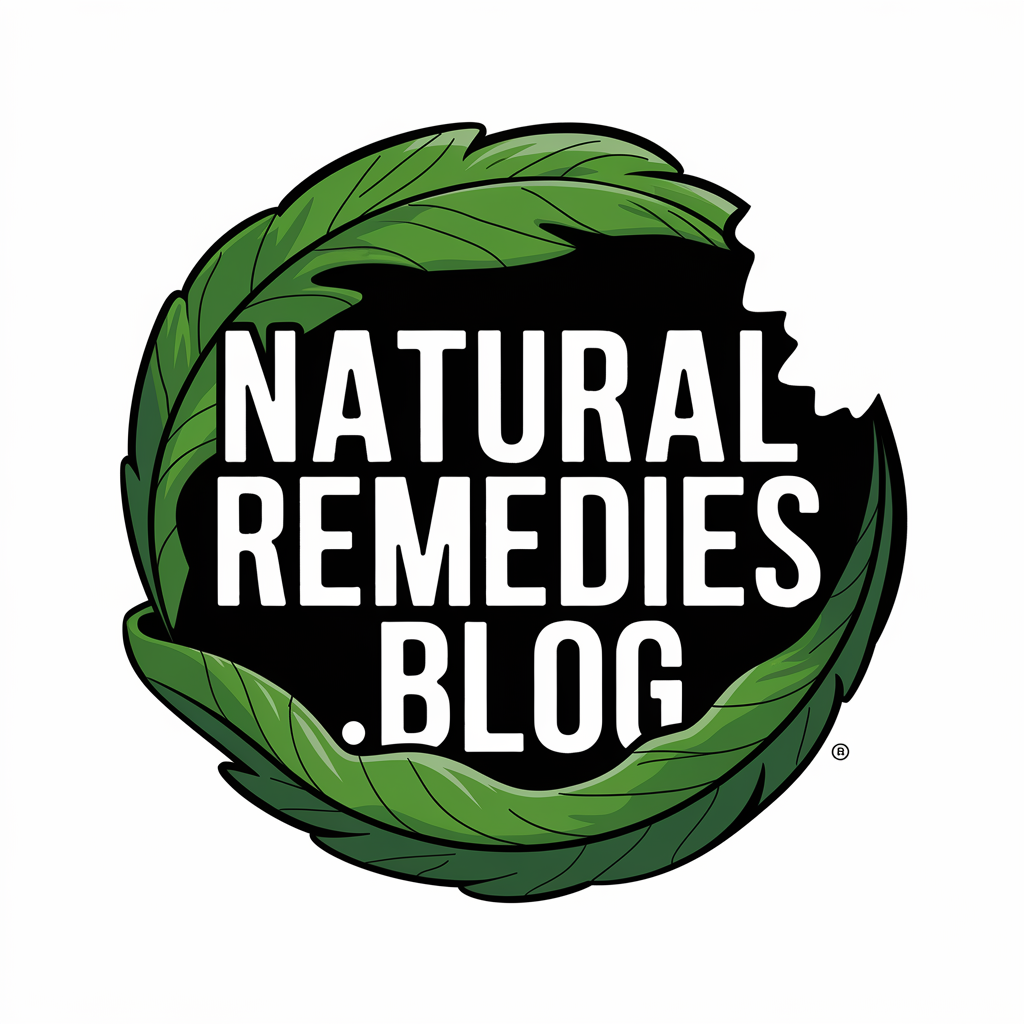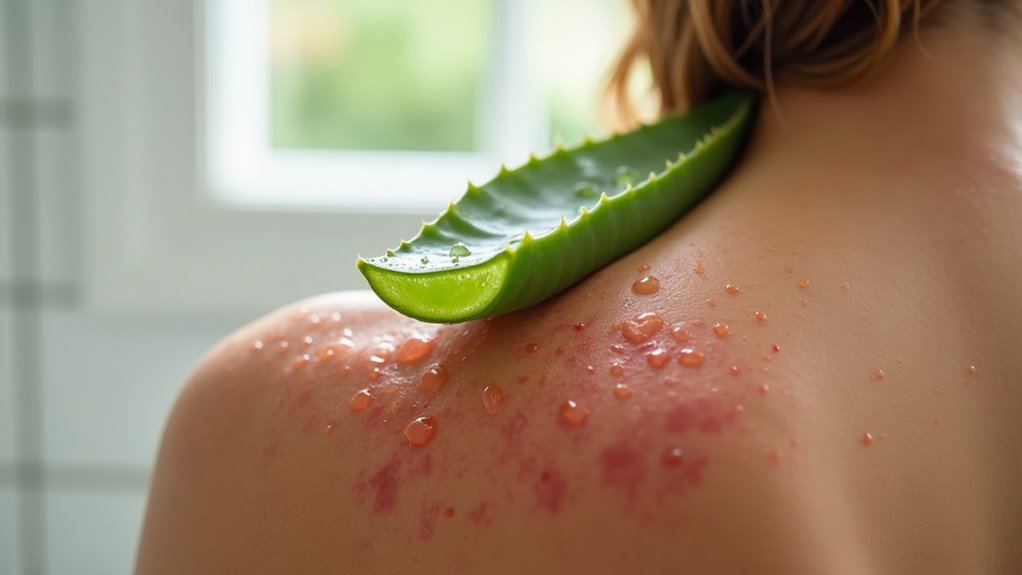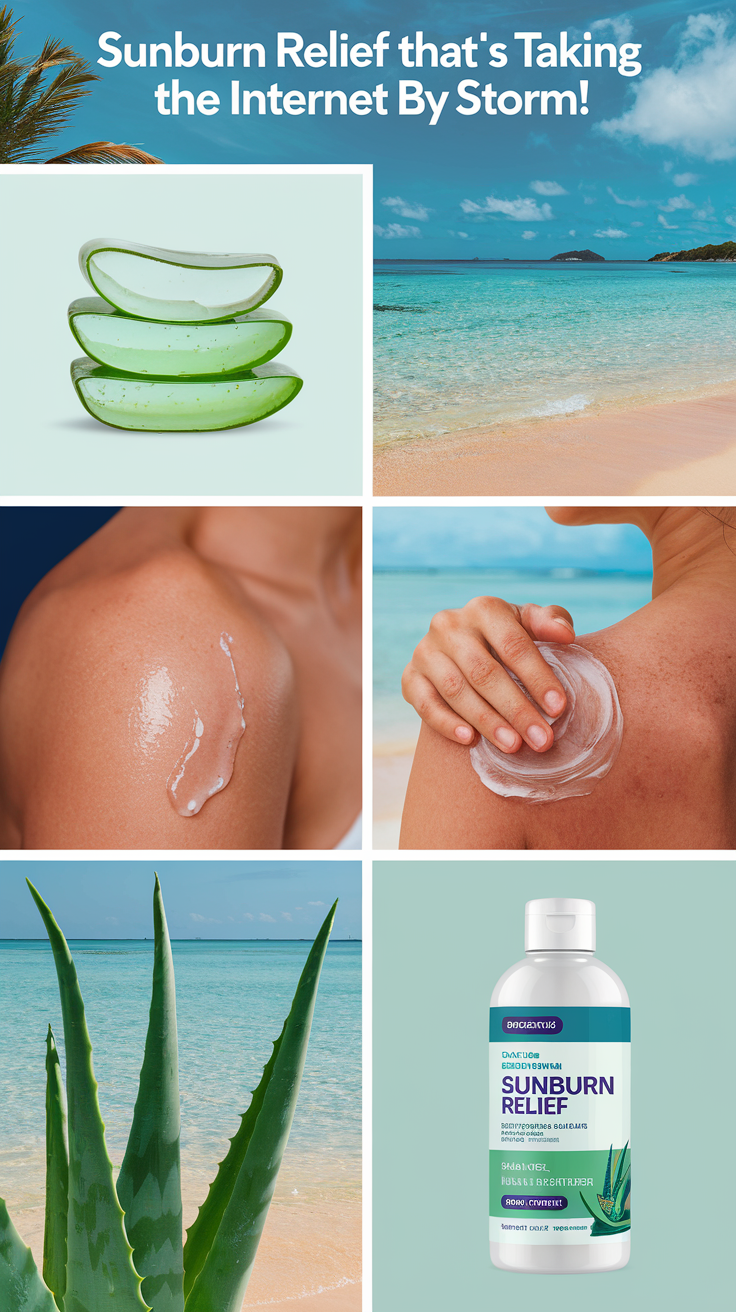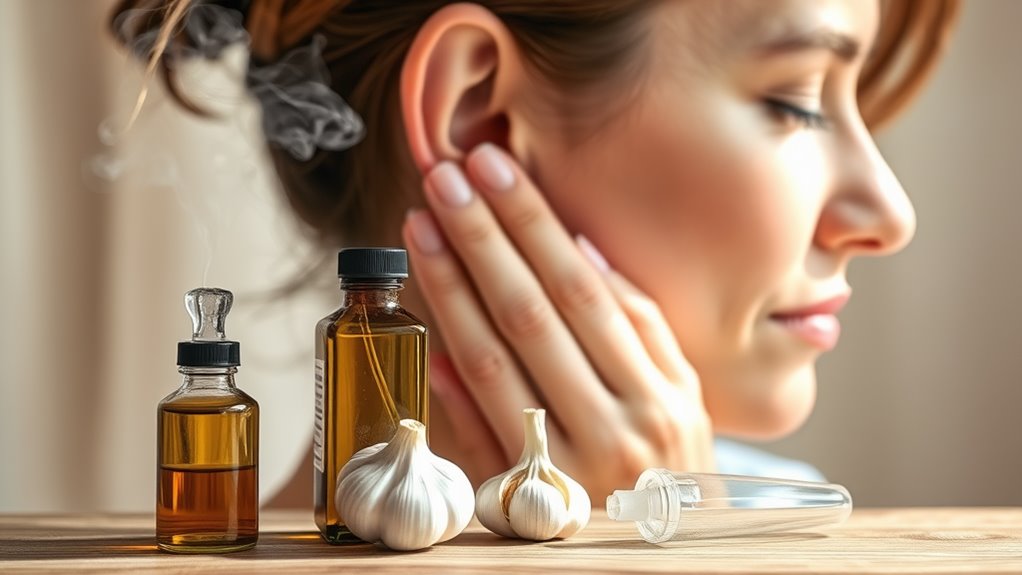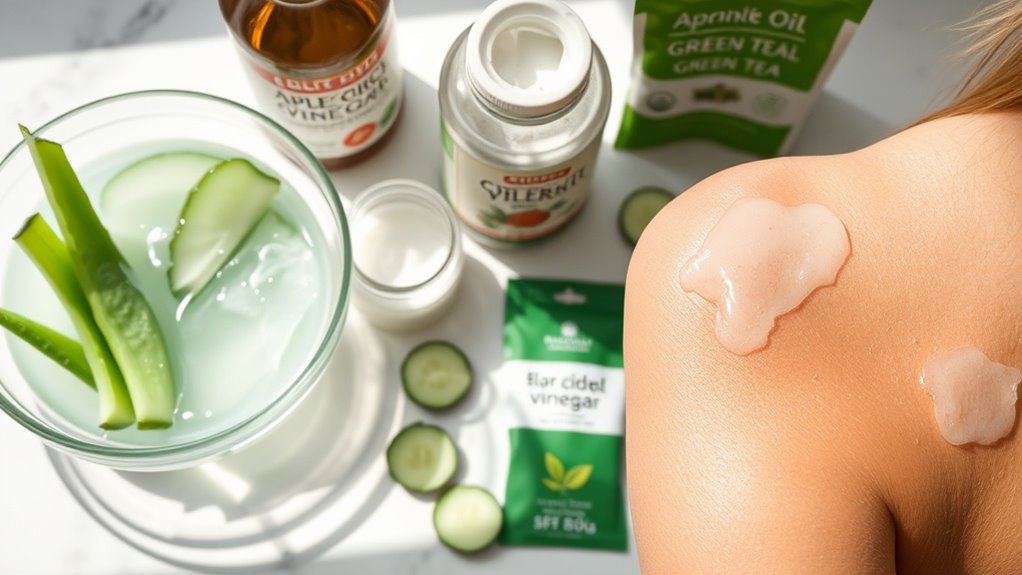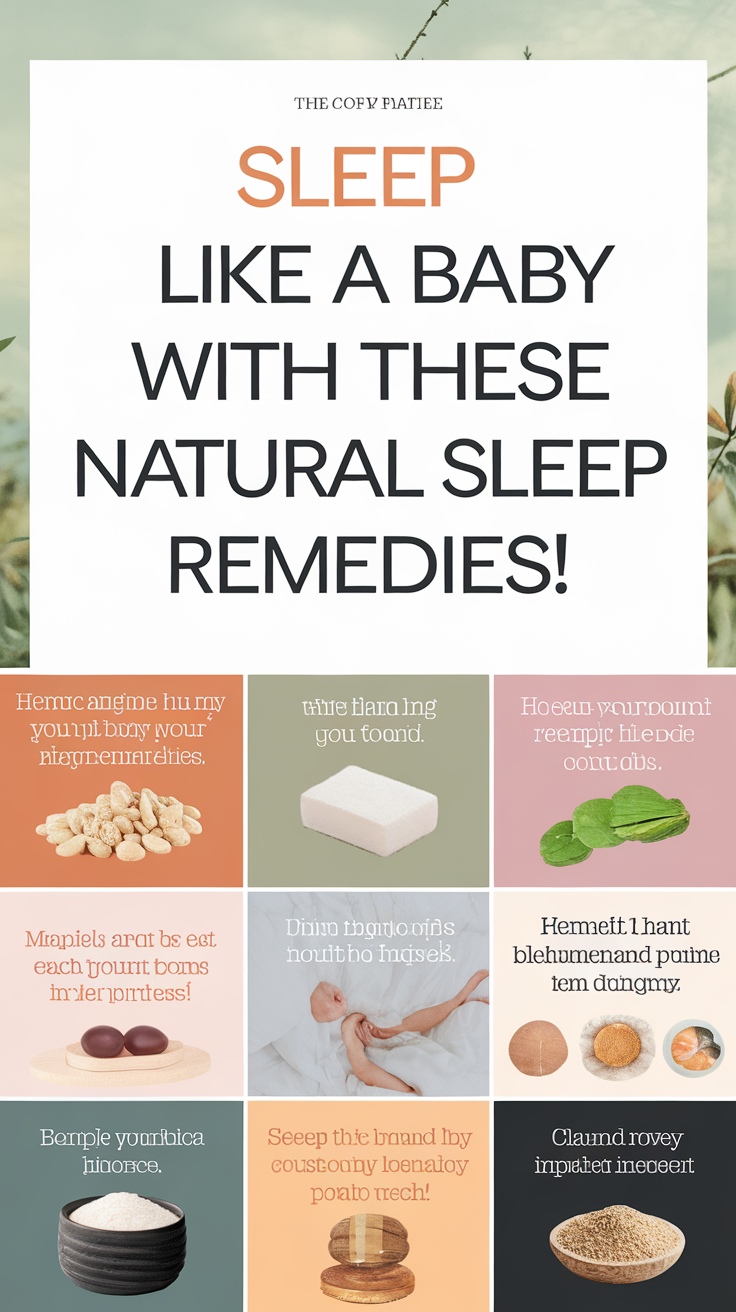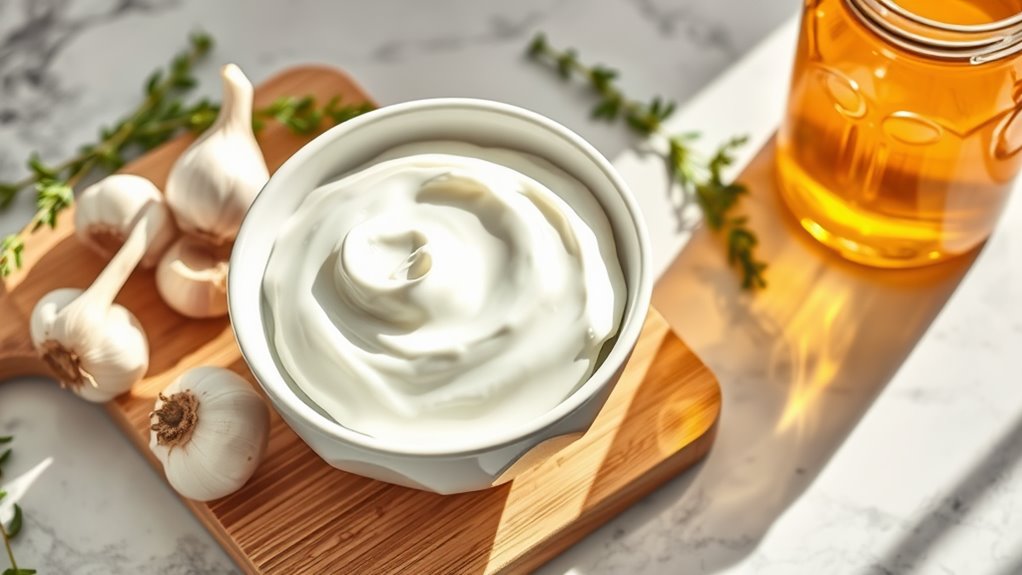Sunburn Relief That’s Taking the Internet by Storm!
You’ll find quick relief from painful sunburn using today’s most viral remedies. Start with refrigerated aloe vera gel for its proven anti-inflammatory benefits, or try the TikTok-approved shaving cream method for temporary comfort. Cool showers, green tea compresses, and cucumber slices can also provide instant soothing effects. While these trending solutions offer immediate comfort, understanding the science behind sunburn treatment will help you make the most informed choices.
Key Takeaways
-
Refrigerated aloe vera gel provides immediate cooling relief and creates a protective layer while delivering anti-inflammatory benefits to sunburned skin.
-
Green tea compresses are scientifically proven to reduce inflammation and redness, making them a safe, trending natural remedy.
-
The Korean beauty industry’s aloe ice products offer instant cooling effects and are gaining massive popularity on social platforms.
-
Cold therapy techniques using ice packs wrapped in thin towels for 10-15 minutes effectively reduce swelling and pain.
-
Shaving cream applications offer safe, temporary relief and have become a viral TikTok remedy for sunburn discomfort.
Understanding the Science Behind Sunburn
Ultraviolet radiation from the sun can wreak havoc on your skin in as little as 15 minutes of exposure. When UV rays penetrate your skin, they damage your DNA and trigger your body’s inflammatory response. That’s why you’ll notice redness, swelling, and that painful sensation we all dread.
Your body’s natural defense mechanism kicks in immediately, increasing blood flow to the affected areas to help repair the damage. This explains why your skin feels warm to the touch.
While you’re searching for sunburn remedies, it’s helpful to know that your body is already hard at work healing itself. The peeling you might experience days later is actually your skin’s way of shedding damaged cells and replacing them with healthy ones.
Viral TikTok Sunburn Remedies
Have you noticed the endless stream of sunburn “hacks” flooding your TikTok feed? While some trending remedies might seem promising, not all viral solutions live up to the hype. Let’s explore what’s actually worth trying from social media’s most popular sunburn treatments.
| Viral Remedy | Does It Work? | Safety Rating |
|---|---|---|
| Shaving Cream | Temporary Relief | Safe |
| Vinegar Bath | Not Effective | Not Recommended |
| Green Tea Compress | Scientifically Backed | Very Safe |
| Menthol Foam | Short-term Relief | Use with Caution |
Before you jump on the latest TikTok trend, remember that trusted methods like aloe vera and cool compresses remain your best bet. While some viral remedies show promise, always check with healthcare professionals before trying unusual treatments, especially if you’re dealing with severe sunburn.
Classic Aloe Vera: Why It’s Still a Top Choice
Despite countless new remedies hitting the market each year, aloe vera remains the gold standard for sunburn relief. This trusted plant, used for thousands of years, contains powerful anti-inflammatory compounds that soothe your damaged skin and promote faster healing.
You’ll find that pure aloe vera gel reduces redness, swelling, and that uncomfortable burning sensation almost immediately after application. It’s no wonder why dermatologists and skincare experts continue to recommend this natural remedy.
The gel creates a protective layer on your skin while delivering cooling hydration that prevents peeling.
For best results, keep your aloe vera gel in the refrigerator – you’ll love the extra cooling sensation. Whether you’re using gel from a fresh plant or a store-bought version, you’re joining generations who’ve trusted this time-tested solution.
Cold Therapy Techniques for Instant Relief
When sunburn strikes, cold therapy offers immediate comfort and helps reduce inflammation in damaged skin. You’ll find quick relief using these proven cooling techniques that dermatologists recommend.
| Method | Duration | Benefits |
|---|---|---|
| Cool Shower | 5-10 minutes | Reduces heat and pain |
| Ice Pack Wrap | 10-15 minutes | Decreases swelling |
| Frozen Cloth | 15-20 minutes | Soothes burned areas |
For best results, wrap ice packs in a thin towel before applying them to your skin. You can also try freezing a damp washcloth or using cold cucumber slices directly on the affected areas. Remember to take breaks between applications to prevent skin damage, and don’t apply ice directly to your sunburn. If you’re dealing with severe burns, combine these cooling methods with over-the-counter pain relievers for maximum relief.
Pinterest’s Most-Shared Natural Solutions
Popular on Pinterest, natural sunburn remedies combine readily available household ingredients to provide gentle, chemical-free relief.
You’ll find thousands of pins featuring soothing oatmeal baths, cooling aloe vera gel, and invigorating green tea compresses.
The most-shared remedy is a DIY mixture of coconut oil and lavender essential oil, which helps reduce inflammation while moisturizing damaged skin.
Another trending solution combines Greek yogurt with honey for a calming mask that hydrates and promotes healing.
Tea bags aren’t just for drinking – Pinterest users swear by applying cool chamomile tea bags directly to burned areas.
You can also try the viral apple cider vinegar spray that’s taking over healing boards, or join fellow pinners using cucumber slices for their natural anti-inflammatory properties.
Over-the-Counter Medications That Work
To quickly relieve sunburn pain and inflammation, you’ll find several effective over-the-counter medications at your local pharmacy.
Start with oral NSAIDs like ibuprofen or aspirin to reduce pain and swelling. These trusted pain relievers work from the inside out, helping you feel better within hours.
For topical relief, look for aloe vera gels containing lidocaine or hydrocortisone cream (1%). These cooling medications numb the affected area and reduce redness.
You’ll also want to try products containing benzocaine, like Solarcaine, which many sunburn sufferers swear by. Just remember to avoid any topical medications containing benzocaine if you’re sensitive to it.
Don’t forget antihistamines like Benadryl, which can help with itching and make it easier to sleep while your skin heals.
DIY Kitchen Remedies Going Viral
Social media has sparked a wave of kitchen-based sunburn remedies that actually work.
You’ll find these trending treatments in your pantry right now: cold green tea bags reduce inflammation when pressed against burned areas, while plain yogurt creates a cooling mask that soothes and moisturizes.
Apple cider vinegar’s acetic acid helps restore your skin’s pH balance – just mix it with equal parts water and dab it on gently.
The most viral remedy coming from TikTok? Potato slices.
Simply place thin-cut potato rounds directly on your sunburn. The starch and natural enzymes help draw out heat and ease discomfort.
For an extra cooling effect, keep your potatoes refrigerated and combine this treatment with a gentle mist of cold black tea.
Hydration and Recovery Methods
While your skin heals from sunburn, staying well-hydrated becomes essential both inside and out.
You’ll want to drink plenty of water throughout the day and supplement with electrolyte-rich beverages to replenish what you’ve lost through skin inflammation.
For external hydration, you’ll find relief by applying aloe vera gel or moisturizer to damp skin – this locks in the moisture your skin desperately needs right now.
Many sunburn sufferers swear by taking cool baths with colloidal oatmeal or adding a cup of coconut milk to their bath water.
When you’re out of the bath, pat yourself dry gently and immediately apply a fragrance-free moisturizer.
Your skin will thank you for these extra hydrating steps, and you’ll notice faster healing and reduced peeling.
When to Seek Medical Attention
Although most sunburns can be treated at home, certain symptoms require immediate medical attention. If you’re experiencing severe blistering over large areas of your body, intense pain that doesn’t respond to over-the-counter medications, or a fever above 101°F, it’s time to call your doctor.
You should also seek help if you notice signs of infection, like yellow drainage or red streaks extending from the burn.
Watch out for symptoms of heat exhaustion or severe dehydration, including dizziness, rapid pulse, headache, confusion, or extreme thirst. These could indicate sun poisoning, which needs professional treatment.
If you’re feeling nauseous or experiencing chills alongside your sunburn, don’t wait to get checked out. Remember, we all want to enjoy the sun safely, so don’t hesitate to get help when these warning signs appear.
Prevention Tips for Future Protection
Since preventing sunburn is easier than treating it, you’ll want to make sun protection part of your daily routine.
Apply broad-spectrum sunscreen with at least SPF 30 about 15 minutes before sun exposure, and reapply every two hours or after swimming.
Protect yourself further by wearing UV-blocking sunglasses, a wide-brimmed hat, and clothing with UPF protection.
Don’t forget to seek shade between 10 AM and 4 PM when UV rays are strongest.
If you’re planning outdoor activities, check the UV index and plan accordingly.
Essential Oils and Their Soothing Properties
Several natural essential oils can help soothe and heal sunburned skin when conventional prevention methods haven’t worked.
You’ll find immediate relief with lavender oil, known for its anti-inflammatory properties and ability to reduce redness. Peppermint oil provides a cooling sensation while promoting skin healing, and tea tree oil offers natural antimicrobial protection for damaged skin.
Mix a few drops of chamomile oil with coconut oil for a calming blend that reduces inflammation and promotes cell regeneration.
You can also try sandalwood oil, which helps retain moisture and accelerates healing. For best results, dilute these oils with a carrier oil like almond or jojoba before applying them gently to affected areas.
Social Media’s Favorite After-Sun Products
Popular social media platforms have spotlighted three standout after-sun products that consistently receive rave reviews from skincare enthusiasts and sunburn sufferers alike. You’ll find these trending products all over TikTok, Instagram, and YouTube, with millions of views and countless testimonials.
| Product | Key Benefits | Price Range |
|---|---|---|
| Sun Bum Cool Down Lotion | Vitamin E + Aloe | $10-15 |
| Coola ER+ Radical Recovery | Organic Agave | $32-38 |
| Korean Aloe Ice | Instant Cooling | $15-20 |
| Benton Aloe Propolis | K-Beauty Favorite | $15-22 |
These viral sensations aren’t just hype – they’ve earned their status through proven results. Whether you’re dealing with a mild flush or serious sunburn, these community-backed solutions offer real relief that thousands of users swear by.
Debunking Popular Sunburn Myths
While social media can highlight effective sunburn treatments, it can also spread misinformation about sun damage.
Let’s set the record straight on what really works – and what doesn’t.
You’ve probably heard that butter soothes burns – it doesn’t. This outdated remedy can actually trap heat and worsen damage.
Another myth? That base tans prevent burning. There’s no such thing as a “safe tan” – any color change indicates skin damage.
Don’t fall for the vinegar trick either. While many swear by it, vinegar can irritate your skin and delay healing.
The truth is, simple solutions work best. Cool compresses, aloe vera, and over-the-counter hydrocortisone are your best bets.
And remember, prevention beats any remedy – so keep that sunscreen handy!
Long-Term Skin Care After Sunburn
Once your sunburn starts to heal, establishing a gentle skincare routine becomes essential for long-term skin health.
You’ll want to focus on products that restore your skin’s moisture barrier and protect against further damage. Start with a fragrance-free moisturizer containing ceramides or hyaluronic acid, and apply it while your skin is still damp.
Don’t forget to make sunscreen your daily companion – choose a broad-spectrum SPF 30 or higher. Your skin’s now more vulnerable to UV damage, so you’ll need extra protection.
Add antioxidant-rich serums with vitamins C and E to help repair and strengthen your skin. When you’re outdoors, wear protective clothing and seek shade, especially during peak sun hours.
Trending Anti-Inflammatory Solutions
Recent trends in sunburn relief have embraced natural anti-inflammatory solutions that combine traditional remedies with modern science.
You’ll find everyone’s talking about turmeric-infused cooling gels and green tea compresses that are dominating social media feeds.
The latest buzz centers around Korean beauty-inspired aloe formulations with centella asiatica, a trending ingredient that’s proven to reduce redness and inflammation.
Another popular option that’s gaining traction is CBD-infused after-sun sprays, which many users swear by for their powerful anti-inflammatory properties.
You won’t want to miss out on the viral cucumber-mint ice roller trend – it’s a game-changer for sunburned skin.
These innovative tools combine the cooling effect of traditional cucumber slices with the convenience of modern skincare gadgets that everyone’s adding to their summer survival kit.
Expert-Recommended Recovery Timeline
Although each person’s skin heals differently, dermatologists generally agree on a standard timeline for sunburn recovery.
You’ll notice redness and discomfort within 4-6 hours after exposure, with symptoms peaking around 24-36 hours. During this time, you’re part of the countless others seeking relief from that familiar burning sensation.
Days 2-3 are when your skin might start peeling, but don’t worry – this is your body’s natural healing process at work.
By days 4-7, most people see significant improvement, with redness fading and skin returning to normal. If you’ve experienced blistering, expect a slightly longer recovery of 7-10 days.
Plant-Based Healing Alternatives
Nature provides several effective remedies for sunburn relief, many of which you might already have in your garden or kitchen.
Aloe vera leads the pack as your skin’s best friend, offering immediate cooling and healing properties when applied directly from the plant. You’ll love how cucumber slices reduce inflammation and provide a rejuvenating sensation to burned areas.
Don’t overlook the power of green tea – brew it, let it cool, and apply it with a soft cloth for its antioxidant benefits.
Calendula and lavender carry natural healing properties that can speed up your recovery. For a simple DIY solution, blend oatmeal with cool water to create a soothing paste.
These plant-based alternatives aren’t just gentle on your skin; they’re also free from harsh chemicals that many store-bought products contain.
Latest Technological Advances in Burn Care
Medical technology in burn care has made remarkable strides, introducing innovative solutions that complement traditional treatments.
You’ll find cutting-edge LED therapy devices that target burn-damaged skin cells, promoting faster healing while reducing inflammation.
Smart bandages with built-in sensors now monitor your burn’s temperature and moisture levels, alerting you when it’s time for a dressing change.
The latest spray-on skin treatments use your own cells to create a protective barrier, and portable UV monitors sync with your smartphone to warn you before burning occurs.
You’re also part of a growing community embracing new cooling fabrics with temperature-regulating technology.
These innovations aren’t just changing how we treat sunburns – they’re revolutionizing the way we prevent them, keeping you safer and more comfortable in the sun.
Frequently Asked Questions
Can I Still Go Swimming With a Sunburn?
You’ll want to wait until your sunburn heals before swimming. The chlorine or salt water can irritate your damaged skin, and you’re more susceptible to additional UV exposure while healing.
Does Sunburn Affect Different Skin Tones in the Same Way?
Your skin tone will affect how quickly you burn and the intensity of damage. While everyone can get sunburned, darker skin has more melanin that provides some natural protection.
Will a Base Tan Prevent Future Sunburns?
You can’t rely on a base tan to protect you from sunburns. While it offers minimal protection (equivalent to SPF 3), you’ll still need proper sunscreen to avoid damage.
Can Certain Medications Make My Sunburn Worse?
Yes, your sunburn can get worse with certain medications! Common culprits include antibiotics, acne treatments, and blood pressure meds. Don’t worry – just check with your doctor about your medications’ sun sensitivity.
Is It Safe to Wear Makeup Over Sunburned Skin?
You’ll want to skip makeup while your skin heals from sunburn. It can irritate your damaged skin, block pores, and slow healing. Let your skin breathe for best recovery results.
